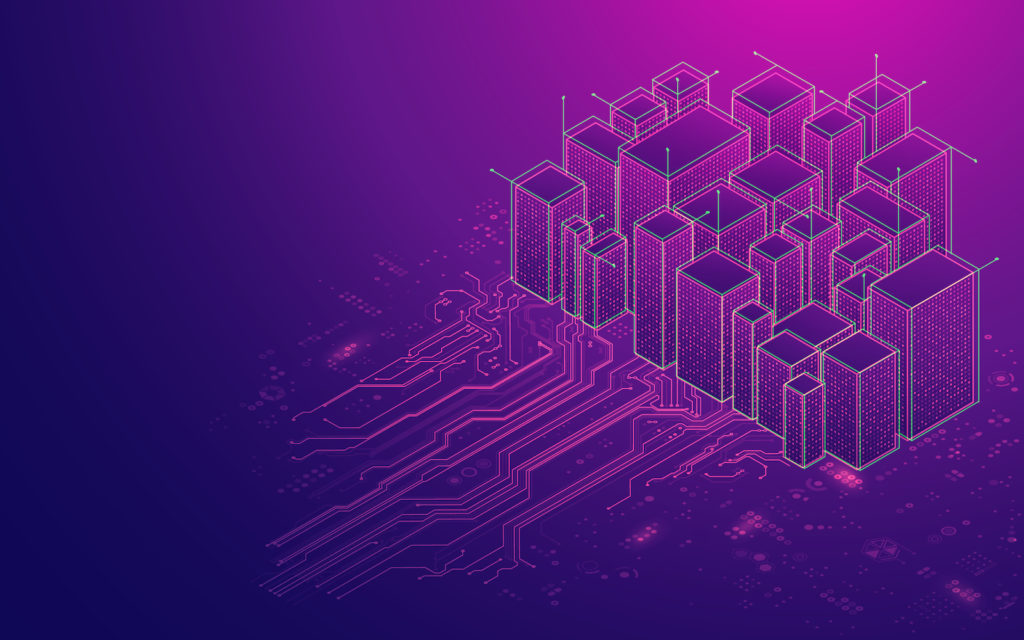Building Information Modelling (BIM) has established itself as a key software in the fields of building design, construction, and more recently operation. Each new iteration of BIM software introduces features that open up new opportunities for buildings and compel the building industry to imagine what might be possible in the years to come. BIM is now laying the foundation for a digital revolution across the full lifecycle of the building.
Since the early 60s, when primitive computers began emerging, we have strived for digital design applications for buildings. Each decade new software replaced the old, each driving the technology forward as more and more architects started using digital design software of some kind. These early systems brought drawings into a 3D world that was far more measurable and editable than miniature models. The founding of the Center for Integrated Facility Engineering (CIFE) at Stanford in 1988 by Paul Teicholz in 1988 marked a turning point for BIM. Teicholz drove the development of ‘four-dimensional’ building models that utilized time attributes specifically for construction.
BIM has long been an established element of the modern construction process, driving new levels of productivity while ensuring designs are more accurately implemented. All building stakeholders can virtually walk through and influence the development of 3D models to ensure that the design is as good as it can be before construction starts. 4D-BIM brings about the visual representation of the construction schedule and soon there will be 5D-BIM and 6D-BIM focused on costs and materials. In the future BIM will have even more design parameters, such as geometrics, aesthetics, or thermal and acoustic properties, to enable construction engineers to build what the designers and other stakeholders really want.
“Building Information Modeling (BIM) is both the leading edge and the foundation of construction innovation”, says Ivanka Iordanova, Director of Pomerleau BIM-VDC. “We’re able to plan and coordinate everything well in the virtual world, before moving towards construction. This is the whole principle behind BIM; work in the virtual, optimize your plan and provide for the real world, leading to more collaboration, less waste, optimization, quality and repeat business.”

In this age of environmental responsibility, sustainability can be built into BIM software to help address the significant impact of buildings on climate change. In the future, a wide range of sustainability metrics can be built into every aspect of the BIM design process, setup in line with regulation and certification. This “green BIM” would allow all buildings to assess their environmental footprint, identify the low-hanging fruit of carbon savings, and accurately predict environmental performance across the building’s lifecycle, all before construction starts. Perhaps the ultimate future application for BIM is as the foundation for digital twins.
“We use BIM because it gives you all the information about the building. It gives you the floors, the rooms, the devices, and then you can add the attributes that are going to represent each endpoint. So, you already have a complete and full ontology, thanks to BIM and this analogy, can be executed by computers, analytic systems in AI systems, of course,” said SpinalCom co-founder, Sebastien Coulon, during a Memoori webinar. “It's very difficult to digitize all these things from a drawing and that's the point, the revolution of BIM is not just about going from 2D vs 3D, it is about going from no database to a database representing the whole building.”
The digital twin has long been seen as the ultimate digitalization of a building. A digital model of the building that is linked to sensors and other inputs to keep a real-time virtual version of the building to monitor systems, drive optimization, and inspire new applications. This futuristic vision is now technically within our reach but still faces barriers to mainstream adoption. The main technical limitation is compatibility with other building software, a BIM-based digital twin should integrate with the already fragmented IoT, as well as augmented reality, 3D printing, and AI, if we are to achieve these goals. The main customer limitation is cost, but as use of BIM increases in design and construction, the more the costs reduce for digital twins for operation.
“The multi system digital twin brings value at the data management layer. It's a single source of truth of all types of data, spatial data, static and live data. It's a data storage fabric and it enables semantic enterprise. It enables operability between the different silos and It enables systems orchestration to create connected experience,” said Coulon, during the webinar. “It enables buildings to reduce the cost because they're going to simplify the architecture of the building with less connectors, less developments, less cost in terms of madness, and it runs much greener.”
While we may have some way to go to increase integration and decrease cost, the digital twin is shaping up to be an important tool for future smart buildings. BIM is proving itself to be crucial in us reaching that digital twin future and looks set to expand into building operations. The BIM-led building world lays the foundation for digital twins to revolutionize buildings with digital monitoring of physical and legacy systems, as well as facilitating a range of emerging technologies.



